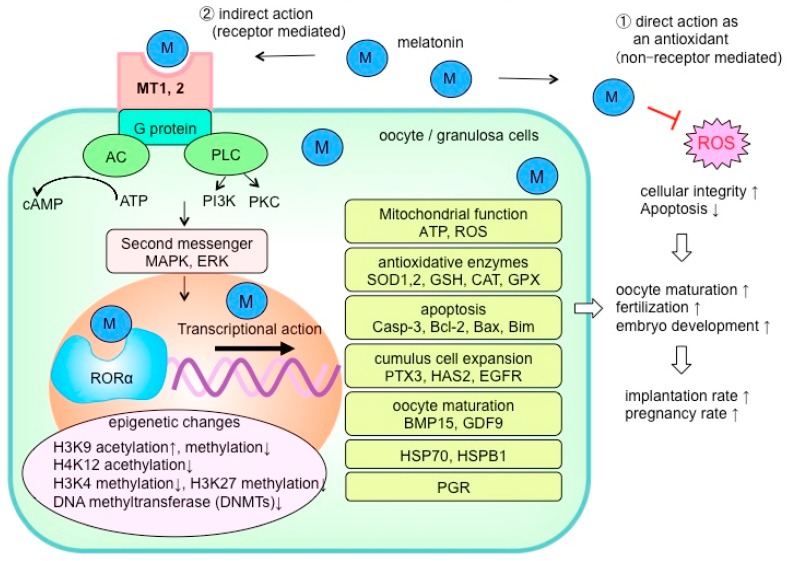Figure 3.
The reported mechanisms by which melatonin improves oocyte quality. The actions of melatonin are to be expected as a direct antioxidant effect to alleviate reactive oxygen species (ROS) and oxidative stress. Another indirect action of melatonin via cell membrane receptors (MT1, MT2) and nuclear receptor (RORα) also is considered to be very important for oocyte maturation and embryonic development. It is reported that antioxidant enzyme activity in oocytes, the expression of apoptosis-related factors, expression of genes involved in oocyte maturation and embryonic development, and epigenome changes such as DNA methylation and histone acetylation can be regulated by melatonin supplementation. ROS: reactive oxygen species; AC: adenylyl cyclase; PLC: phospholipase C; ATP: adenosine triphosphate; PI3K: phosphatidylinositol-3 kinase; PKC: protein kinase C; MAPK: mitogen-activated protein kinase; ERK: extracellular signal-regulated kinase; SOD: superoxide dismutase; GSH: glutathione; CAT: catalase; GPX: glutathione peroxidase; Casp: caspase; Bcl-2: B-cell lymphoma-2; Bax: Bcl-2-accociated X protein; Bim: Bcl-2 interacting mediator of cell death; PTX3: pentraxin-3; HAS2: hyaluronan synthase 2; EGFR: epidermal growth factor receptors; BMP: bone morphogenic protein; GDF: growth differentiation factor; HSP: heat shock protein; PGR: progesterone receptor.

